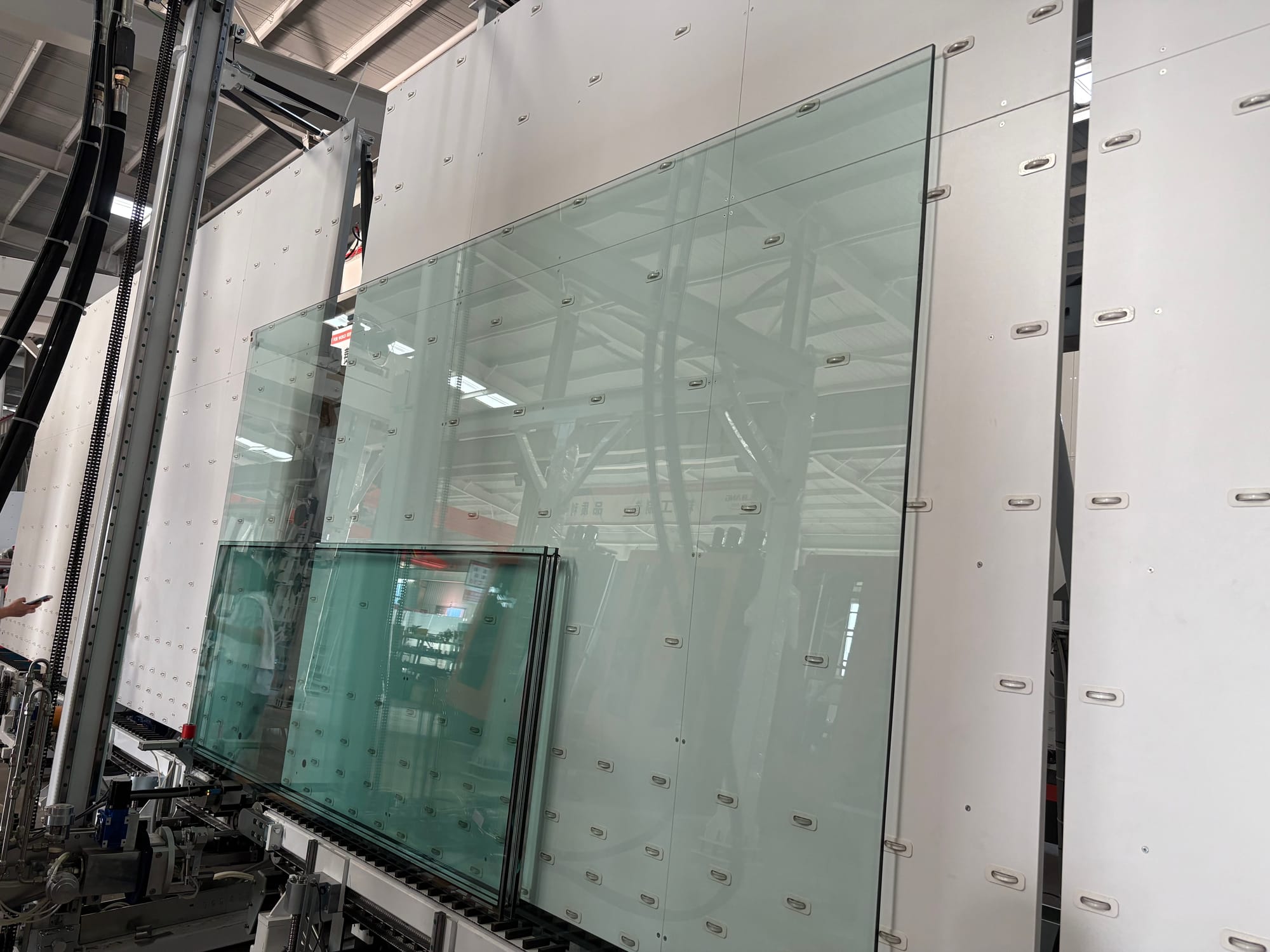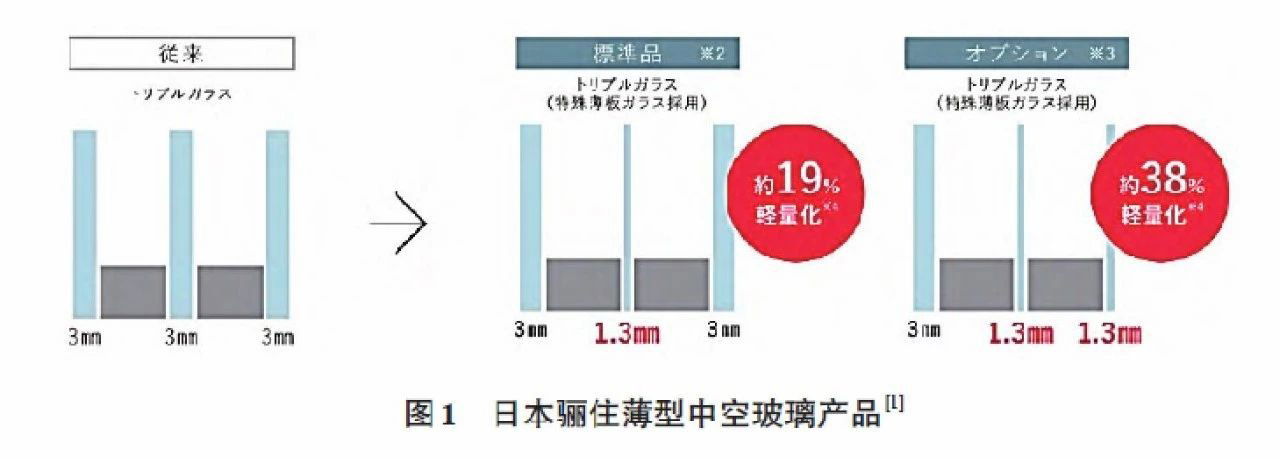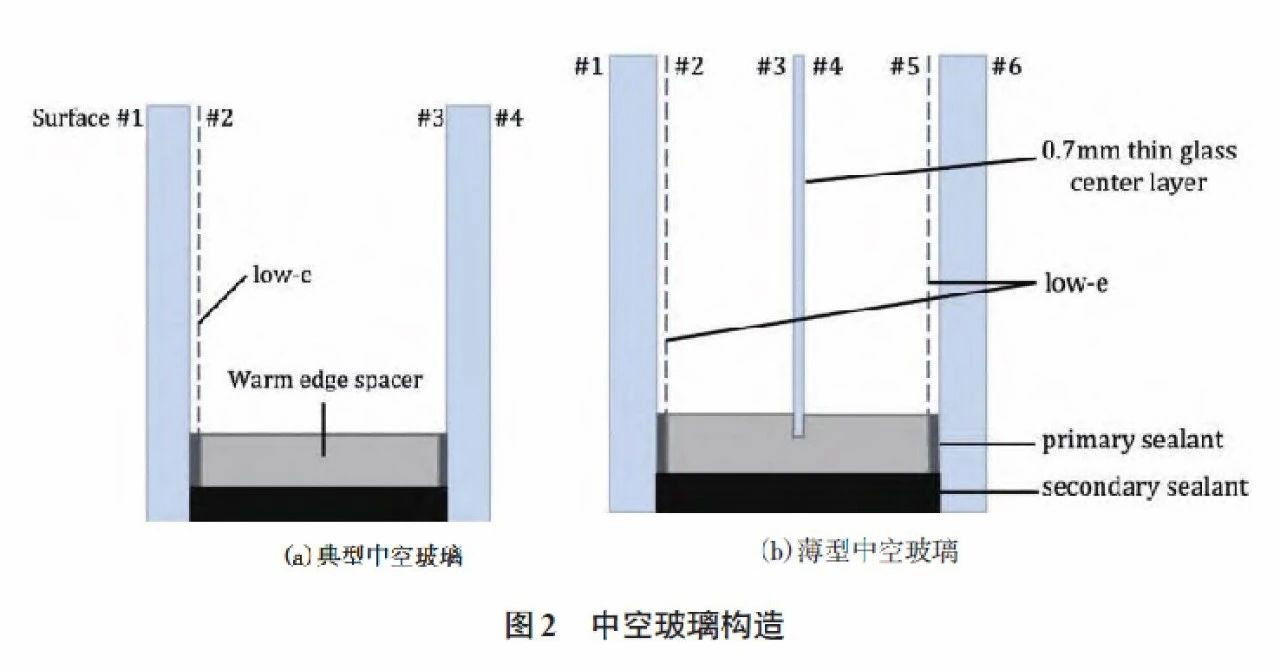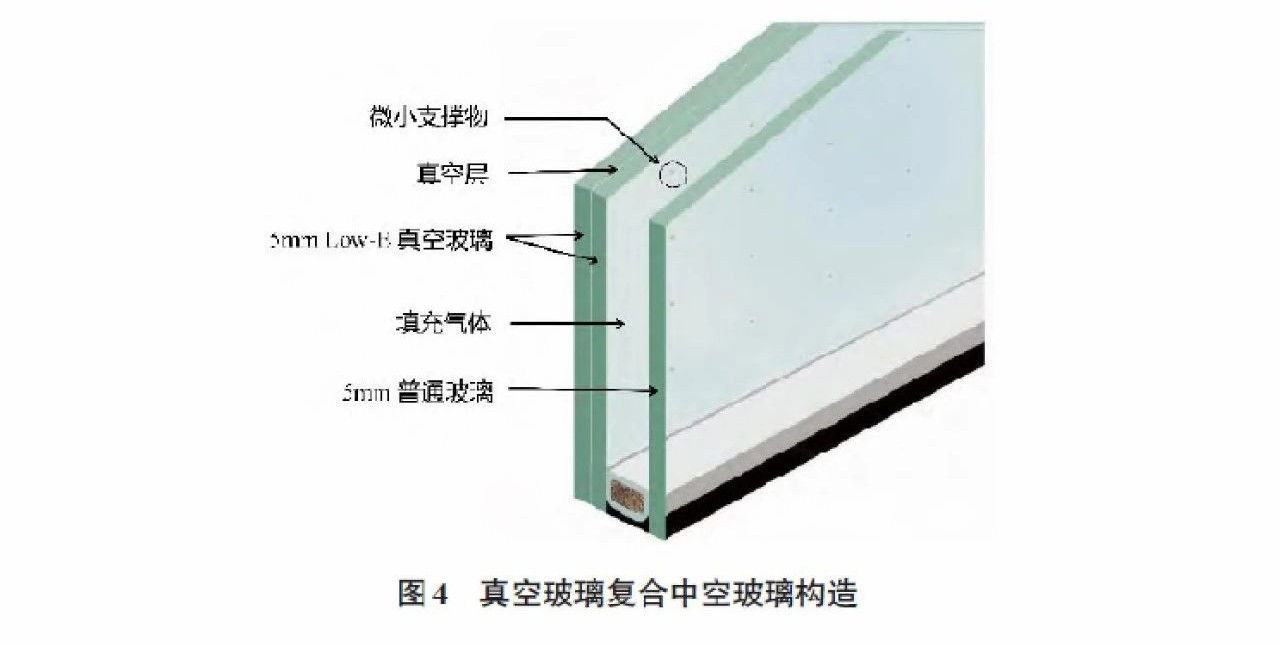Research on the development of thin insulating glass

With the continuous development of building energy conservation, three-glass two-chamber insulating glass has become the leading product form of building exterior windows. Compared with traditional single-chamber insulating glass, the increase in the number of chambers significantly improves the thermal insulation performance of insulating glass. For example, the K value of (6+16A+6) insulating glass is 2.7 (W/m²・K), while the K value of (6+16A+6+16A+6) insulating glass can reach 1.7W/m²・K. If low-emissivity (Low-E), inert gas filling, warm edge strips and other technologies are applied, such as (6Low-E+16Ar+6+16Ar+6Low-E) insulating glass, the K value can even be as low as 0.8W/m²K.However, while three-glass two-chamber insulating glass improves the thermal insulation performance of doors and windows, it also leads to an increase in the amount of door and window materials used. First, the weight of glass increases, which in turn increases the width and thickness of the profile and the strength requirements of hardware. In triple-pane double-chamber insulating glass, the two outer glasses mainly bear the support and load-bearing functions, and the main function of the middle glass is to separate the chamber and limit the convective heat transfer of the filling gas, thereby increasing the thickness of the insulation layer, and at the same time, it must meet certain mechanical performance requirements. Based on the role of the middle glass, the idea of replacing the existing 6mm middle glass with other thin materials came into being, thus forming thin-glass triple pane glazing.The concept of thin insulating glass was first proposed in 1989 (Arasteh, et al. 1989; Selkowitz, et al. 1991), but due to the technical and market factors at the time, the concept was too advanced and failed to gain a good market response. Due to the need to resist wind loads, there are certain requirements for glass thickness. On the one hand, thicker glass itself has better mechanical properties and processing properties, and on the other hand, it can also adapt to wind tempering and strengthening processes. As early as the 1980s, three-glass two-chamber insulating glass was regarded as a feasible way to achieve high efficiency and energy saving. With the increasing requirements for energy saving, three-glass two-chamber insulating glass has been gradually developed and applied, and has now become a typical product of high-performance exterior windows. Obviously, thin insulating glass is mainly for insulating glass with two chambers or more, including thinning glass and the overall thickness of insulating glass. In a broad sense, any method that can thin the thickness of insulating glass can be called thin insulating glass.1 Center-placed thin glass insulating glassInorganic glass is the main product form of three-glass two-chamber insulating glass. Thinning it can be considered from the composition of three layers of glass. The outdoor side glass bears wind load, and thinning can be attempted on the premise of meeting the mechanical performance requirements; although the indoor side glass does not directly bear wind load, it still needs to have certain mechanical properties as a use surface, and there is also a certain potential for thinning; and the center glass located between the indoor and outdoor sides does not directly bear wind load, and its thinning potential is the greatest. For example, Japan's Lixil thinned the original (3+3+3) mm glass to (3+1.3+3) mm, with a lightweight rate of about 19%; when further thinned to (3+1.3+1.3) mm, the lightweight rate can reach about 38%.The Western Pacific National Laboratory in the United States conducted a study on the energy-saving effect of replacing existing architectural glass with high-efficiency energy-saving thin insulating glass instead of traditional insulating glass. The thin insulating glass consists of two pieces of glass with a thickness of about 3.2mm (1/8 inch) with Low-E film and a piece of middle thin glass with a thickness of about 1.6mm (1/16 inch). The test results show that in the heating season, the HVAC energy saving is 0.2-18.7 kWh per day, with an energy saving rate of 3%-18%; in the cooling season, the energy saving is 2.5-8.0 kWh per day, with an energy saving rate of 23%-41%, and the sound penetration is reduced by 8-10dB. The Lawrence Berkeley National Laboratory in the United States placed 0.7mm thin glass in ordinary insulating glass (3mm glass + 3mmLow-E) to make thin insulating glass. The study showed that in climate conditions dominated by heating (such as Minneapolis, Minnesota), the energy-saving potential of thin insulating glass replacing typical exterior window glass is 16%; in mixed climate conditions (such as Washington, DC), the energy-saving potential is 12%; in climate conditions dominated by cooling (such as Houston, Texas), the energy-saving potential is 7%.The thickness of glass used for exterior windows in China has been gradually increasing. In the 1980s, 3mm glass was the dominant specification of float glass in my country; after 1993, 5mm glass became the mainstream product; currently, 6mm glass occupies the mainstream position. In 2013, Wang Xinchun et al. proposed the thinning of flat glass products. The annual per capita consumption of flat glass in my country is 20.7kg, which is 1.25 times that of EU countries, 2 times that of the United States and 2.6 times the world average. The thicker flat glass is one of the reasons for the abnormal per capita consumption of flat glass in my country. It is estimated that if the 5mm glass in 2012 is thinned to 4mm, 7.1 million tons of glass production can be reduced and 7.71 million tons of raw material consumption can be reduced, including 6.35 million tons of natural resources such as silica sand and 1.36 million tons of chemical products such as soda ash. The article also puts forward five suggestions, including changing the development model of the industry and enterprises, improving the level of production technology, adjusting the industrial chain, increasing scientific research efforts, and relevant departments starting the work of thinning flat glass as soon as possible. At the same time, enterprises such as CSG Group are also actively trying thin applications for exterior windows.At present, the development of thin insulating glass has good adaptability. First, it is in line with the development concepts of "dual carbon goals", green manufacturing, green buildings, etc., and can drive the glass, profiles, doors and windows curtain walls, transportation and other industrial chains to achieve energy saving, material saving and carbon reduction; second, double-chamber/multi-chamber hollow glass is the leading product of my country's high-efficiency and energy-saving transparent enclosure structure, with thinning potential; third, the central thin glass hollow glass has a broad industrial foundation, which is conducive to promoting industrial transformation and development; fourth, my country's thin glass/ultra-thin glass manufacturing industry provides materials and industrial foundation for it, and photovoltaic glass and protective glass of the sodium-lime-silicon system can be used as basic products. There are no obstacles to the thinning conversion and production of flat glass in terms of technology and production capacity.2 Insulating glass with central film materialInserting organic film material in hollow glass (as shown in Figure 3) can separate a single chamber into two or more chambers. Non-functional organic films (white films) only play the role of separating chambers to limit convection, increase the thickness of the insulation layer and achieve thinness and lightness; in addition to the above functions, functional organic films (thermal mirror films) are also endowed with low emissivity and other characteristics, which can further control thermal radiation and enhance energy-saving effects. The central film material insulating glass was developed by Southwall Technologies in the United States. It came out in 1970 and was applied to the construction field. Li Hao et al. studied the excellent thermal properties of thermal mirror film insulating glass. The central film material is a thermoplastic film, which is heated to make it taut during the production process. However, the laying and installation of the membrane material requires manual operation, which increases the production cost. He Xueping et al. studied the key assembly process design of the central film material insulating glass system. In the future, reducing the cost of membrane materials, realizing the automatic installation of membranes, reducing manual intervention and reducing processing costs will be the development focus of central film material insulating glass. 3 Vacuum glass composite insulating glassVacuum glass is a glass product made of two or more pieces of glass separated by support columns, sealed around to form a cavity, and evacuated to the cavity. In order to balance the influence of support columns on heat transfer and force performance, the number and area of support columns should be minimized, so support columns with small cross-sectional area and short length are usually selected, while ensuring that the visual effect is not affected. Theoretically, convection heat transfer and conduction heat transfer have nothing to do with the thickness of the vacuum layer, and the thickness of the vacuum layer is generally between 0.15 and 0.25 mm. At least one piece of vacuum glass is low-emissivity glass to achieve effective insulation against the three basic heat transfer modes of thermal conduction, convection and thermal radiation. Therefore, vacuum glass itself is a highly efficient thin glass product. Only by combining vacuum glass with insulating glass can the insulation performance of vacuum glass be fully utilized. Its structure is shown in Figure 4. Although one piece of vacuum glass is located in the middle of the insulating glass, it is subject to atmospheric pressure after vacuuming and also has to withstand the pressure of the support column. Therefore, the thinning of vacuum glass is subject to certain restrictions. However, vacuum glass reduces the overall thickness of composite insulating glass with its high efficiency and energy-saving performance, achieving the purpose of thinning. Although the production level of vacuum glass in my country has made significant progress, the high cost is still the main factor restricting its promotion.4 Aerogel insulating glassAerogel has excellent lightweight thermal insulation performance. Applying it to insulating glass can achieve thinness and high efficiency and energy saving. For example, the K value of (6+12A+6) insulating glass is 2.8W/m²K, the K value of (6Low-E+12A+6) is 1.8W/m²K, and the K value of (6+12aerogel+6) can be reduced to 1.0W/m²・K. Filling aerogel particles in insulating glass is a feasible method of intermediate placement, and the cost is relatively low. However, due to the difference between the refractive index of aerogel and the interface of particles and glass, as well as the perspective problem of aerogel itself, the haze value of insulating glass will increase, affecting its perspective. Reducing the haze value of the aerogel itself and achieving the composite of the whole aerogel (rather than particle filling) is one of the effective ways to improve the perspective. The transparent enclosure structure of the building facade (external doors and windows, curtain walls) has high requirements for perspective. In the enclosure structure with lighting as the main purpose, aerogel insulating glass is expected to be widely used. However, further research is needed on the effects of solar radiation heat accumulation and cold and hot shock on the mechanical properties of insulating glass.5 SummaryThe thinning of insulating glass has become a development trend, with multiple benefits such as material saving, energy saving, and carbon saving. In terms of development countermeasures and selection, the industrialization foundation of central thin glass insulating glass is good, and the cost advantage is obvious. It can be used as the preferred development direction; the central membrane material insulating glass and vacuum glass composite insulating glass have a high degree of thinness, and have a certain application space in new buildings. The advantages are more prominent when replacing glass in the energy-saving transformation of existing buildings; aerogel insulating glass, as a future development direction, is suitable for promotion and application in lighting enclosure structures.






